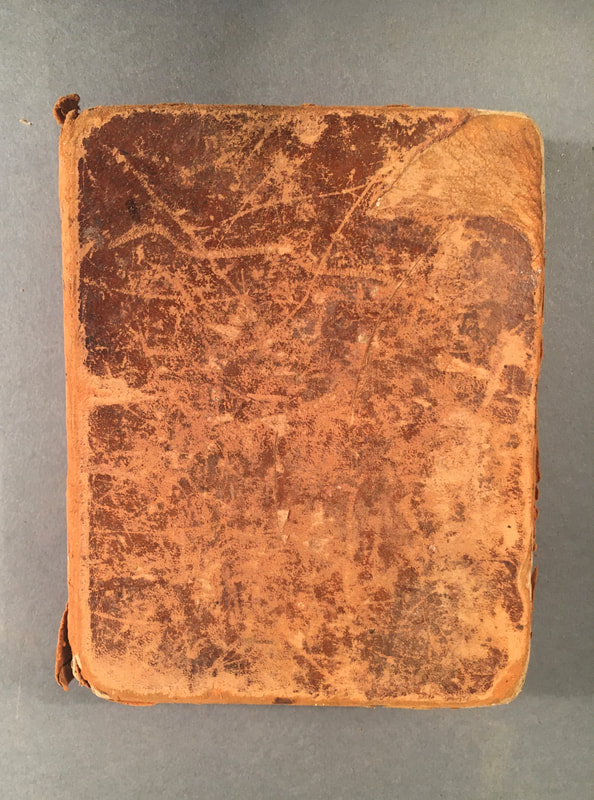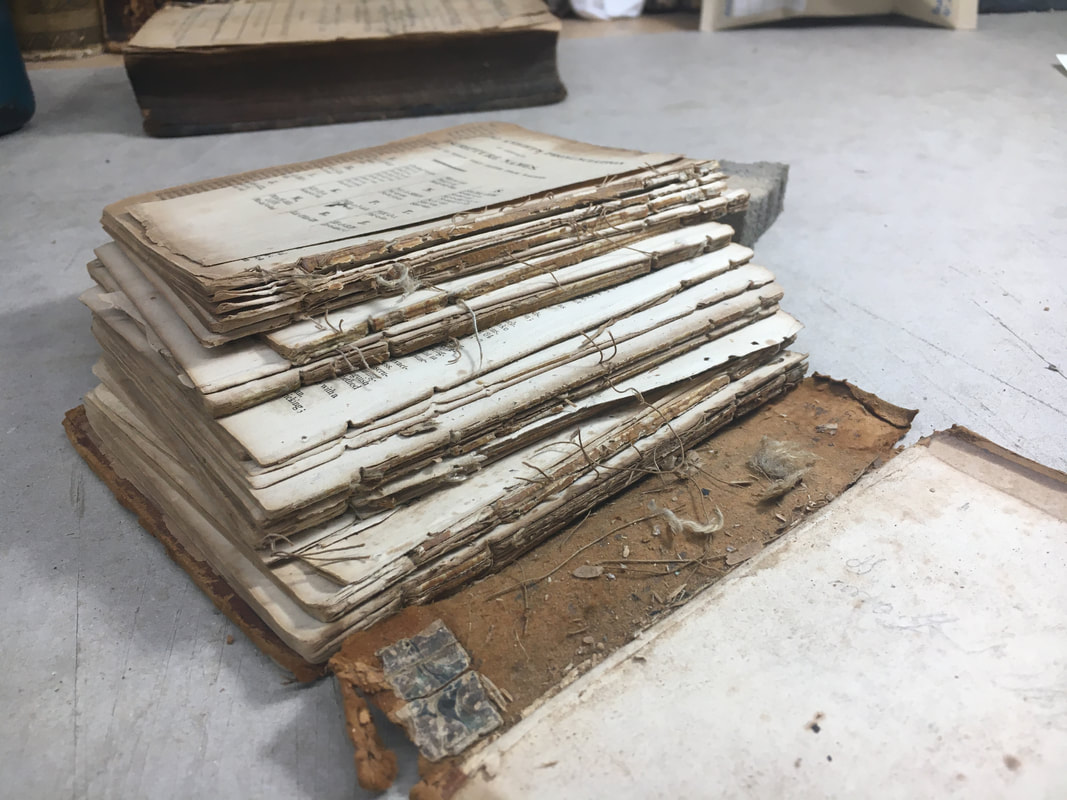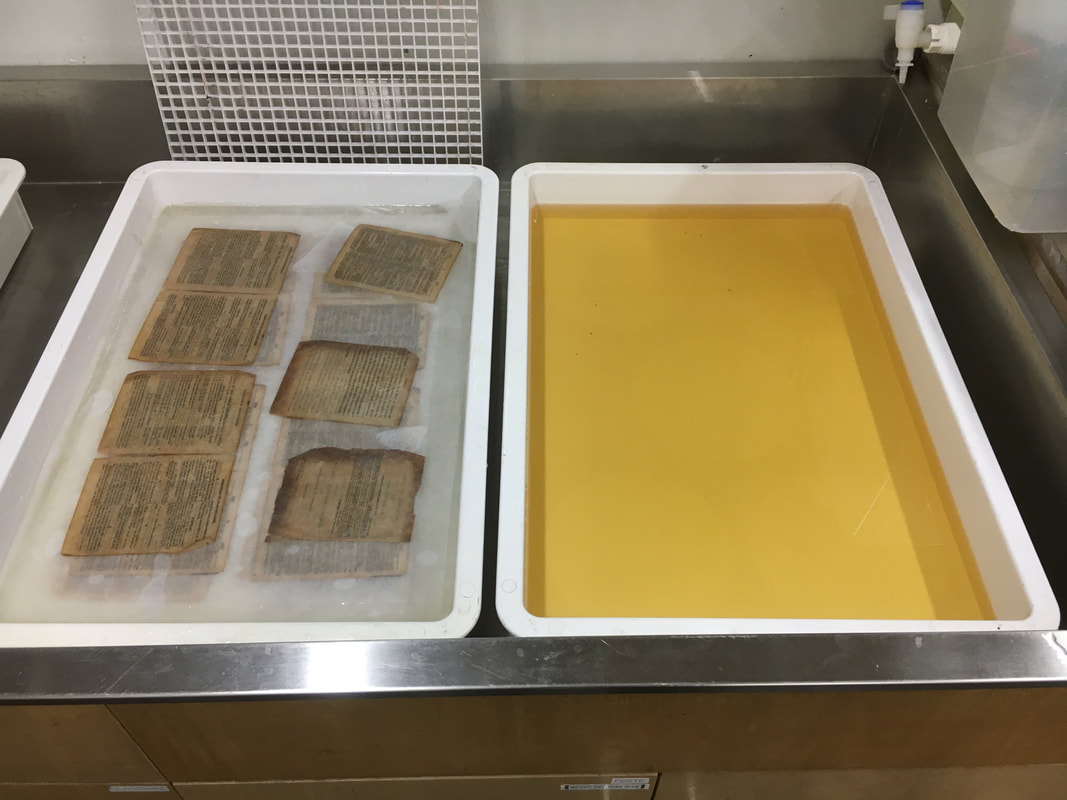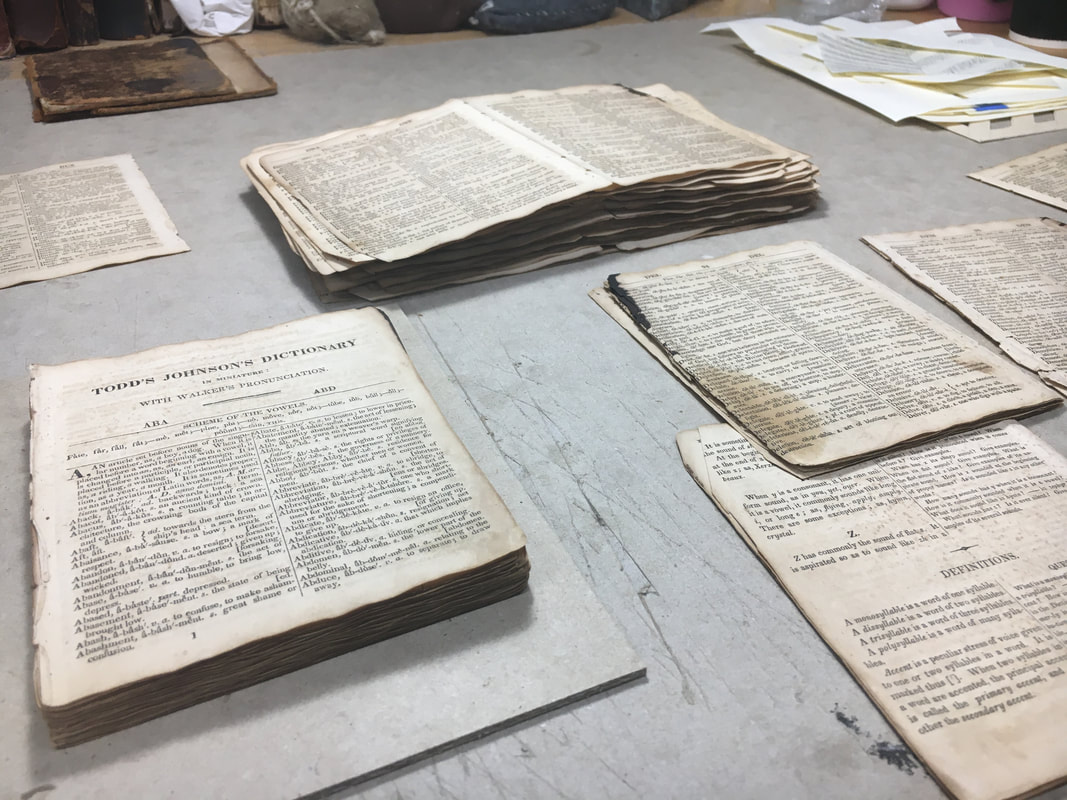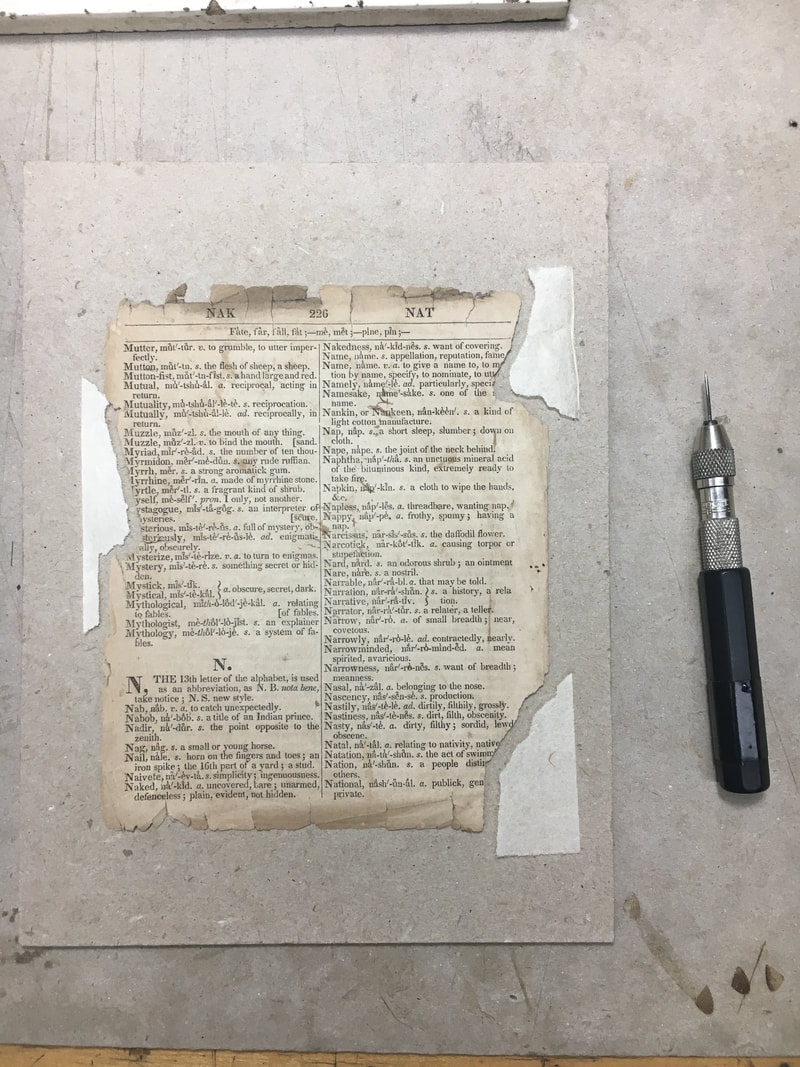|
Just as the leaves began to change here in Boston, swashing an already beautiful skyline with a whole new set of colors, our studies at NBSS transitioned from the millimeter bindings of the early 20th century to the full calf bindings of the 18th. Sewn on raised or recessed cords, trimmed in boards, covered with undyed skin and stained with mild acids after covering, the structure was as foreign as it was satisfying to complete. After a few models to get a hang of the processes, I decided to dive into my own collection and rebind a sorry volume of my own from the early 19th century in this style, repeating many of the binding processes that it had first undergone nearly 200 years ago. Johnson's Dictionary Improved by Todd, Boston, 1828. The original calfskin binding and even the black goatskin label were still present, but thoroughly scuffed and soiled. The textblock was completely separated from the case and even appeared to have been exposed to open flame at some point, with char marks and losses present to the front cover and several text pages. The sewing was a complete mess. The original tightback structure suggests that there was never any additional spine lining on this book, so when the leather first came free from the book, the sewing was completely exposed. Rather than allow the book to fall to pieces, though, some past owner of this volume took it upon themselves to repair the worn sewing by adding their own overcasting right over the top of the original, the thinner, darker thread seen in this photo. Gratefully, the original calfskin managed to hold onto a bit of the original marbled paper which made up the rolled paper endbands, and I'll be able to match these much more accurately in my rebinding than if I'd had to guess the look of these accessories based on the time period and place of publication. Because the sewing was so damaged, there were a few pages that, while they were still present, had been run through the gauntlet over the years and were in more urgent need of attention than the majority of the textblock, which was fairly clean. During the disbinding, a cleaner section of the textblock revealed that the textblock was originally sewn two-on, the length of thread jumping between two sections rather than running "all along" a single section before moving to the next, evidenced by these diagonally cast threads over the original cord recess. This was likely done to quicken the sewing time and limit the swell which would otherwise have unrulily puffed out the 28-section book After the book was fully disbound and the old thread and glue fragments were removed, I took the opportunity to treat the book to a spa day and give the textblock a good washing. A spot test confirmed that the printing ink was not water soluble, and after removing a few pages with iron gall ink scribbles, I prepared the textblock for washing by separating the signatures into individual leaves and spreading them out over sheets of thick reemay, a spun polyester material which is non-reactive but allows moisture to pass through. The reemay sandwiches were first passed through a 50/50 wetting solution of isopropyl alcohol and deionized water which relaxed the cellulose fibers in the paper and made them more receptive to the washing process. The sheets then went into a bath of clean deionized water containing 60-80ml of a 4% calcium carbonate solution to neutralize the pH of the bath. The pages were allowed to soak in each bath for 30 minutes before being moved to a new bath. This process was repeated in baths of a slightly higher pH with each iteration until the baths came out mostly clean after a soaking session. The basic solution of the later baths adds a buffer reserve for the lignin of the paper to attach to before it returns to browning, embrittling, and acidifying the paper fibers. After washing, the book's folios were dried on screens, pressed flat for 24 hours, re-collated to ensure that no sheets were misplaced during the washing process, and the paper mending process began. Slowly, surely, I made my way through the textblock one folio at a time, guarding the outer folio of every signature and the inner folios where necessary with japanese tissue and methyl cellulose, keeping in mind the swell that would be added incrementally by the layers of paper building up at the spine edge. I also patched major losses at this stage with with tissue and MC, ensuring the structural completeness of the textblock even where the original content had been lost. Once the tissue guards and mends had dried, the full stack of unsorted folios were pressed flat over a weekend to manage wrinkles introduced by the wet tissue guards and help mitigate some of the newly added paper bulk. After being pressed flat, the extended guards were trimmed, the mended folios were re-collated and folded in order... ...and finally, after having logged nearly 20 hours at the bench, the stabilized textblock is ready to be re-sewn onto recessed cords. Tune in soon for the second installment of this rebinding series!
0 Comments
Leave a Reply. |


